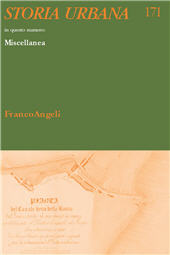Città di carta : usi dello spazio urbano e architettura religiosa a Candia nel tardo periodo veneziano
35-55 p.
Gli studi sulla città di Candia devono fare i conti con la frammentarietà delle fonti e con il fatto che il patrimonio costruito di età veneziana è stato fortemente rimaneggiato o è scomparso. Il saggio indaga lo spazio urbano a Candia nel tardo periodo veneziano, una fase di poco precedente alla conquista ottomana, attraverso alcuni catastici inediti (XVI-XVII secolo) e il confronto con la storiografia e l'iconografia storica.
Alla catalogazione dei toponimi riferiti a luoghi urbani è seguita una loro mappatura. Sono stati così esaminati da un lato i tipi di beni, gli edifici religiosi menzionati e la loro posizione - alcune ipotesi note di attribuzione sono state confermate e ne sono state avanzate di nuove - e dall'altro alcuni aspetti della suddivisione e dell'uso dello spazio: i luoghi coinvolti nei trasferimenti, l'organizzazione in contrade/parochie e l'analisi di alcune aree con vocazione specifica. La struttura dei catastici permette di mappare non l'esatta posizione delle proprietà, ma le macroaree in cui esse ricadevano: è possibile ricostruire quindi una geografia parziale del mercato immobiliare a Candia, identificando le aree maggiormente interessate dai passaggi di proprietà, e aggiungere nuovi strumenti per interpretare la città come processo spaziale, sociale, economico, politico ed edilizio. [Testo dell'editore].
Studies on the town of Candia must deal with the fragmentary state of sources and with the fact that the Venetian built heritage has been heavily modified or has disappeared. The paper deals with the urban space in Candia in the late Venetian period, a short time before the Ottoman conquest, by investigating some unpublished catastici (16th-17th century) compared to historiography and historical iconography. The cataloguing of urban place names was followed by their mapping. On the one hand, the types of properties, the mentioned religious buildings and their position were examined - some known attribution hypotheses were confirmed, and new ones were proposed - and, on the other hand, some aspects of the subdivision and use of space were considered: the places involved in the transfer procedures, the organization into contrade/parochie and the analysis of some areas with a specific use.
The structure of the catastici allows to map not the exact position of estates, but the macro-areas in which they were: it is therefore possible to reconstruct a partial geography of the real estate market in Candia, identifying the areas most involved in changes of ownership, and adding new tools to understand the town as a spatial, social, economic, political, and building process. [Publisher's text].
-
Articoli dello stesso fascicolo (disponibili singolarmente)
-
Informazioni
Codice DOI: 10.3280/SU2022-171002
ISSN: 1972-5523
PAROLE CHIAVE
- Regno di Candia, catasti, cartografia, architettura religiosa, spazio urbano, mercato immobiliare
- Venetian Candia, Cadasters, Maps, Religious Architecture, Urban Space, Real Estates


